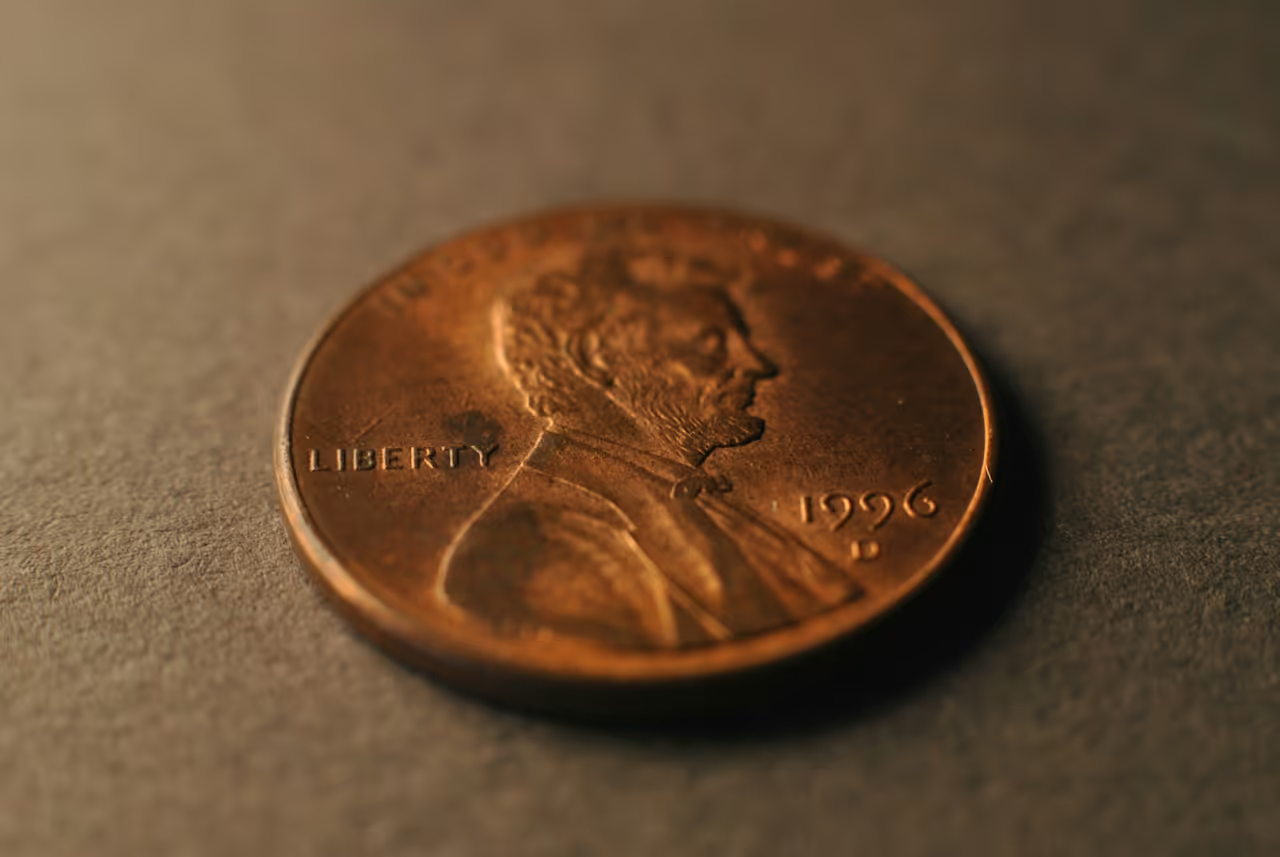
By Chris Spiker From Daily Voice
The penny has officially run out of luck.
After 238 years in circulation, the final one-cent coin will be pressed at the US Mint in Philadelphia on Wednesday, Nov. 12. According to CNN, Treasury Secretary Scott Bessent and Treasurer Brandon Beach will oversee the minting of the last penny.
Economists and lawmakers have proposed getting rid of the penny throughout the 21st century. They've cited the relatively high price of putting a penny in circulation, along with recent shifts toward digital payment methods and online banking.
According to the US Mint, taxpayers spent $85.3 million for the minting of nearly 3.2 billion pennies in 2024. Each penny cost about 3.69 cents to produce in 2024, marking the 19th consecutive year that its cost exceeded its face value.
The Treasury expects to save about $56 million annually by discontinuing the penny. Any savings could be canceled out by the need to mint more nickels, which cost 13.8 cents to put into circulation.
Former President Barack Obama pushed for ending the penny during his time in office. In 2015, former Treasury Secretary Jacob Lew planned to suspend penny production, but the coins continued to be minted.
President Donald Trump renewed the push to eliminate the penny when he returned to office, calling the penny a "wasteful" expense.
"Let's rip the waste out of our great nation's budget, even if it's a penny at a time," Trump posted in February on his social media platform Truth Social.
Before its ceremonial final minting, the penny's popularity has been slipping throughout 2025. The Federal Reserve, which distributes coins for the federal government, has suspended penny orders at more than half of its regional distribution sites, Politico reported.
Businesses have spent months adjusting to the change. Some companies like McDonald's plan to round cash transactions to the nearest nickel, while others are asking customers to pay with pennies to help maintain supply.
In several states, rounding up or down could invite lawsuits under consumer protection laws.
"People didn't realize how quickly this was going to spread," Retail Industry Leaders Association senior executive vice president Austen Jensen told Politico.
Steve Kenneally, senior vice president of payments at the American Bankers Association, said banks are worried about cashing checks for non-customers, rounding those transactions up to the nearest nickel.
"We want to make sure banks don't suffer any inadvertent regulatory mishaps, because we're trying to do the right thing and round in favor of the customer," Kenneally said. "We would like to have something, whether it's from a regulator or legislation, that gives us guidance and that makes it a consistent customer experience everywhere. Having different businesses have different policies just doesn't feel right."
The penny was first authorized under the Coinage Act of 1792, with early designs featuring a woman with flowing hair, symbolizing liberty. The coin's size, artwork, and metal composition have evolved over the years, eventually changing from pure copper to a copper-zinc mix.
President Abraham Lincoln's image arrived on the penny in 1909, commemorating his 100th birthday. The current design, featuring a Union shield on the back side, was introduced in 2010 to honor Lincoln's preservation of the US as a single nation.
Treasury officials estimate 300 billion pennies remain in circulation, and even though the coins will no longer be produced, they'll remain legal tender and keep their value.

 Daily Voice
Daily Voice

 The Columbian
The Columbian CBS DFW
CBS DFW The Oregonian Public Safety
The Oregonian Public Safety The Times Herald
The Times Herald Political Wire
Political Wire Crooks and Liars
Crooks and Liars NBC News MLB
NBC News MLB